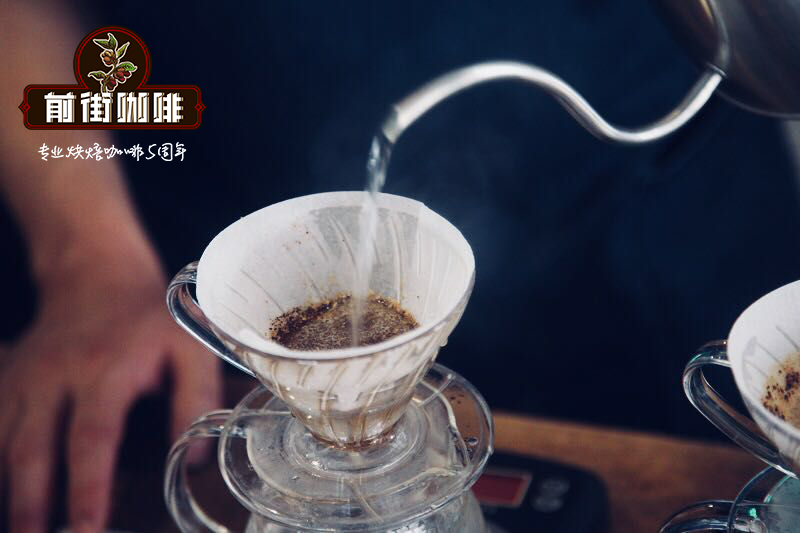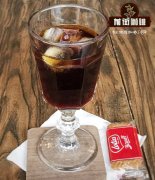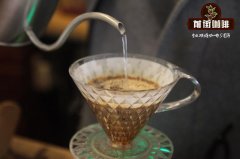Coffee beginners must pay attention to matters to learn how to make coffee must understand the knowledge

The key to the quality of professional coffee is determined by five elements, which determine whether your coffee is mediocre or consistent. A perfect cup of coffee is different for everyone: one person may prefer the strong coffee in the French kettle, while the other may prefer the smooth, full-bodied coffee in the siphon pot, while others prefer the simple and elegant traditional hand-filtered coffee.
According to these five elements to make coffee, regardless of the brewing method or type you need, can ensure the highest quality of coffee.
1. water
Water accounts for 98% to 99% of a cup of coffee. The water for making coffee should be neutral, and the temperature and quantity should be appropriate.
The best coffee brewing water does not have any unpleasant taste or aroma. The American SCA Professional Coffee Association recommends that water have a total dissolved solid (TDS) value of 50 to 100ppm, a pH value of 6.5 to 7.5, no iron, and no taste, smell or particles.
Temperature plays an important role in the production of coffee, heating water to 197 to 204 degrees Fahrenheit (92 to 96 degrees Celsius) to extract all the attractive flavors and aromas of coffee. Cold water will make the taste and aroma of coffee can not be extracted, while too hot water will produce plain, bitter coffee.
Capacity is the key to controlling the ratio of coffee to water, for drip brewing, the ratio of 64 ounces of water: 3.25-4.25 ounces of coffee, this is a cup of coffee that meets the "golden cup standard" brewing.
According to this ratio, water temperature and TDS standard water, 18% to 22% soluble substances will be extracted from coffee to obtain coffee liquids with total dissolved solids (source of flavor substances) concentrations from 1150TDS to 1350TDS.
two。 Grinding
Ground coffee can reduce the particle size of coffee and increase the surface area of coffee in contact with water, so it plays a major role in the formation of coffee flavor and aroma. The degree of grinding must match the brewing method and the brewing time.
Brewing for a short time, such as a mocha pot, requires ultra-fine ground coffee for instant extraction.
A longer brewing time, such as a French kettle, requires thicker coffee, because longer soaking time requires thicker coffee particles. The particle size of the cone / flat knife grinder is more uniform than that of the blade grinder, so the aroma of coffee is more obvious.
3. Clean
The easiest way to improve coffee quality is to clean the brewing equipment. Natural coffee oil and small coffee particles will cover the equipment, causing a scorched, bitter or sour taste, which will be transferred from the unclean equipment to the next brewing.
You don't cook food in a dirty pot, nor do you make coffee in dirty equipment. Cleaning is recommended as a daily part of using coffee pots, bean grinders and coffee cups.
4. Drinking time
The flavor of coffee is very easy to pass over time, so experts recommend that brewed coffee should be kept in a glass for up to 30 minutes or in an thermos cup for 60 minutes. After this time, the aroma of the coffee will dissipate, but the dissolved matter will continue to be heated in the coffee liquid, resulting in plain, strong and sour coffee.
5. Freshness
Coffee is also very perishable after roasting and must be handled carefully and stored correctly. The freshness of coffee beans can be maintained for about three weeks, while the shelf life of coffee powder is less than an hour, because the large surface area of coffee powder in contact with the air increases the speed of coffee deterioration.
To maintain quality, store coffee in a cool, dry place, away from light, heat, moisture and strong odors. Before brewing, use a bean grinder to grind the powder to maximize the flavor and aroma. Stale coffee has a flat, paper and thin taste.
Cooking method
The choice of brewing methods should be based on personal convenience and taste needs, and strictly abide by the five principles of professional coffee brewing in order to ensure the stable quality of coffee.
Drip filter coffee
Drip filter coffee, invented in France at the end of the 18th century, is the most common and convenient way to brew coffee in families and coffee shops. The paper coffee filter invented by Melitta in Germany in 1908 uses gravity to make hot water flow through coffee powder. The drip filter coffee is paired with other hand brewing devices that allow the control of water flow and extraction, and the drip electric coffee machine also uses this principle. The fine grinding degree of drip filter coffee will produce coffee with rich aroma, obvious sweetness and rich layers. The drip brewing method is usually used to evaluate the golden cup standard coffee.
Gold cup standard
The Golden Cup Award was established in the 1950s to recognize excellent coffee brewers. In accordance with the scientific quality standards administered by the American Professional Coffee Association, it is awarded annually to retailers and restaurants that make coffee in a professional manner.
Mocha pot
The mocha pot is between filtered coffee and espresso. This coffee pot with stove is popular because of its convenience and speed. Generally use ultra-fine ground coffee powder, mocha pot can make coffee with strong export feeling.
Siphon kettle
The siphon kettle invented in 1840 is the most sophisticated brewing equipment. The siphon pot is composed of two containers, in which the water rises as steam, and the brewed coffee flows out through the filter under the action of vacuum force, which is visually attractive. The siphon pot is paired with finely ground coffee powder to make the coffee taste smooth and mellow.
French pressure kettle
The French kettle, launched by Bodum in the 1970s, was patented in 1933 for its design and control of extraction, and now coffee shops are gradually seeing the return of the kettle. Through the piston filter to control the brewing time, each user can brew according to their own needs, usually with coarsely ground coffee, can brew a strong aromatic taste.
Important Notice :
前街咖啡 FrontStreet Coffee has moved to new addredd:
FrontStreet Coffee Address: 315,Donghua East Road,GuangZhou
Tel:020 38364473
- Prev

Why does the shape of the cup affect coffee flavor so much? Small details can also affect coffee.
Why does the shape of the cup have such a big impact on flavor? If you know anything about red or fine wines, such as aged whiskeys, you may know the importance of glass shape. Although you may know something about the cultural background of the glass, little is known about the influence of glass shape on wine flavor. Whisky, for example, has a shape that greatly enhances or diminishes one's taste for the aroma.
- Next

Handmade Coffee tutorial | how to make shallow roasted coffee? extraction scheme of hand brewed coffee
Light roasted coffee extraction shallow roasted coffee (Light Roasting Coffee) refers to the baking degree from the first explosion to the second explosion in the roasting stage, that is, the roasting of cinnamon to the city. The main purpose of shallow baking is to enjoy the variety of aromas contained in raw coffee beans. In other words, it reduces the aroma of coffee formed during deep roasting and highlights the characteristics of raw beans. So choose
Related
- Beginners will see the "Coffee pull flower" guide!
- What is the difference between ice blog purified milk and ordinary milk coffee?
- Why is the Philippines the largest producer of crops in Liberia?
- For coffee extraction, should the fine powder be retained?
- How does extracted espresso fill pressed powder? How much strength does it take to press the powder?
- How to make jasmine cold extract coffee? Is the jasmine + latte good?
- Will this little toy really make the coffee taste better? How does Lily Drip affect coffee extraction?
- Will the action of slapping the filter cup also affect coffee extraction?
- What's the difference between powder-to-water ratio and powder-to-liquid ratio?
- What is the Ethiopian local species? What does it have to do with Heirloom native species?

